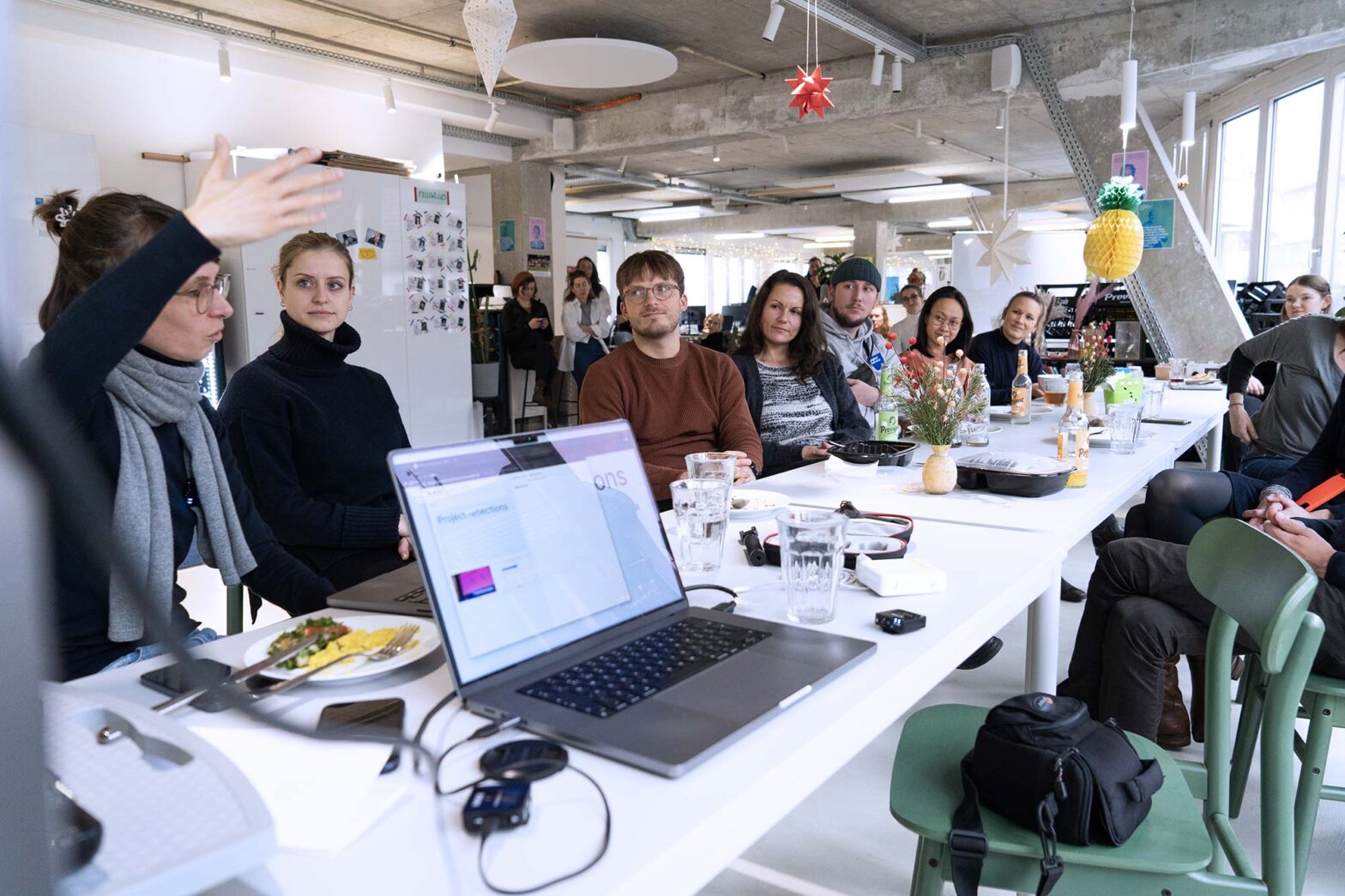I had a 3-day week before launching my well-deserved winter break. Before doing so, Stephanie and I ran a ‘Lunch and Learn’ session on ‘End-to-end transformation and why we’ll never start with the right thing’ on Wednesday.
Stephanie offered reflections for various projects while I introduced the topic and talked about large, multi-year service transformation projects from abroad and Digital Service. By showing the service design chain and the service-policy triangles, I explained what we mean by end-to-end, front-to-back and cross-channel service transformation and what comes with it. This doesn’t get old, and many haven’t heard and seen this yet.
I tried to explain why we’d never start with the right thing, referencing and reading parts of Caroline’s article, ‘All projects (and services) start in the middle’. I presented 2 hypotheses:
- There isn’t one right thing
- We would never know what ‘the right thing’ is at the start
Our colleague Alexander immediately added 2 more plausible hypotheses in the chat:
- The right thing may not exist
- The right thing changes over time
To make things concrete and easier to grasp, I talked about the 11-year service transformation of the UK ‘Make register or end a lasting power of attorney’ service. I posed the question: “Would there have been a better way to do this?”. I went through the UK ‘Check your state pension’ case study with the questions: “‘What was the right thing here? Why does transformation not end”. And I spoke about our efforts to transform people’s experience with digital identity in Germany. There, we may not have made a huge dent yet, but we redesigned the letter that 8 million people receiving new identity cards get every year. “Have we celebrated our impactful bycatch, the letter, enough?”, I asked.
I showed our long slog timelines of government once more to emphasise that we must consider, keep in mind and work with. Quoting Lou Downe’s slide on what service design, or transformation, can be – from applying for funding to powerpoint wrangling to rage-quitting – resonated with attendees. Stephanie reminded us that the stories we tell ourselves during our journey about our efforts matter, and we have some influence on what people remember. Do we focus entirely on the hardship, or do we talk about the many small wins?
Stephanie and I received various questions and positive feedback on the session. One colleague, who is working as a people partner, messaged me afterwards, shared her enthusiasm and gratitude for the reframing and saw immediate application in internal contexts, too.
Progressing and doubling down on accessibility
An hour before, Marion and I gave an update on accessibility at Digital Service and tried to engage and re-engage with more colleagues. In the 3 main strands – awareness, capability building, and testing – we summarised what has happened in the past few weeks and what’s ahead of us.
Just under 20 people joined us, and we recorded the update for everyone who couldn’t make it. Ideally, we can form a few workstreams on focus areas. Daphne already reached out to me as she wants to improve the accessibility with graphic design and comms material, which is terrific. A developer got in touch, expressing he felt very welcome and would like to contribute more.
Marion closed with 3 questions:
- How might we create org-wide excitement over accessibility?
- How might we shift the mindset of public administration–from compliance to a people-centred approach?
- How might we progress without taking up too much space?
Finding good and nuanced answers to these will be vital in the new year. There is plenty to do in the space, and 2024 could be the year of increased momentum.
Luckily, I received an invitation to a public sector panel discussion on accessibility just a day later. Marion and I would like to pick up the second question in the new year and discuss it beyond our organisation. A blog post will be instrumental for that.
Wrapping things up and slowing down
On Thursday, I managed to write a 1,000+ word blog post update on our international efforts for the Design in Government blog while on the train. I was able to build on reflections from these weeknotes and recent LinkedIn posts. Hopefully, Kara, Viktoria and I can still get that post out this year – pending Cabinet Office reviews.
I started listening to a great Decoder podcast episode, an interview with United States Digital Services head Mina Hsiang. Their organisation is about 8 years old and has grown to 230 people. Currently, they have 6,000 applications per year and do 2,000 interviews. That is impressive and a little scary – if we grow to such levels in the not so far future. Mina spoke about the inside-outside role the USDS has. There are some notes we can take from their journey to inform ours.
We also said goodbye to our colleague Caro who is leaving us for the US this week. I introduced her to various people in the public sector there and hope she’ll have a great start there.
What’s next
In the coming week, I will not be working.
I will still consider valuable opportunities to spend my remaining learning and development budget for the year.
I might also edit some of the many conference and meetup recordings I have piled up through autumn. I want to get them published.
And I am tempted to respond to an end-of-year call for speakers from the World Usability Congress in 2024. It could be an excellent opportunity to document and summarise the work we have done and the work ahead of us. I am also considering what we can do for next year’s Global Accessibility Awareness Day on 16 May. Maybe we can combine some internal activities with a public-facing meetup. But, at least, that is something for later.

